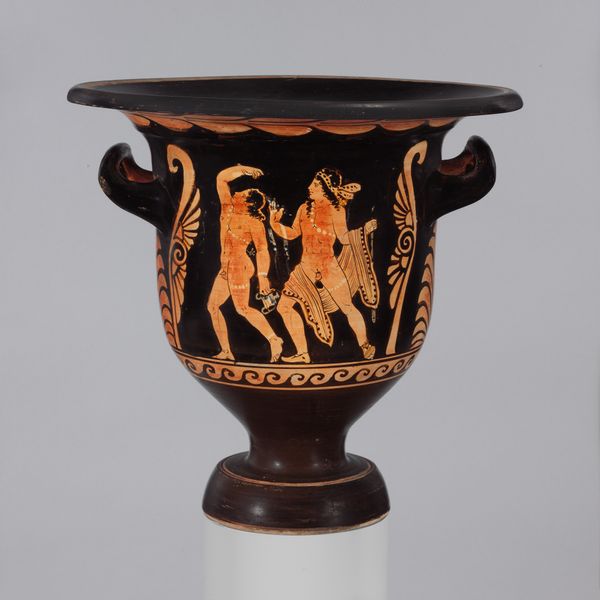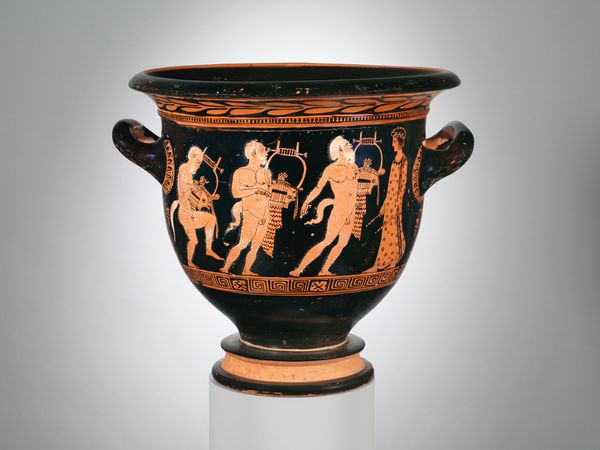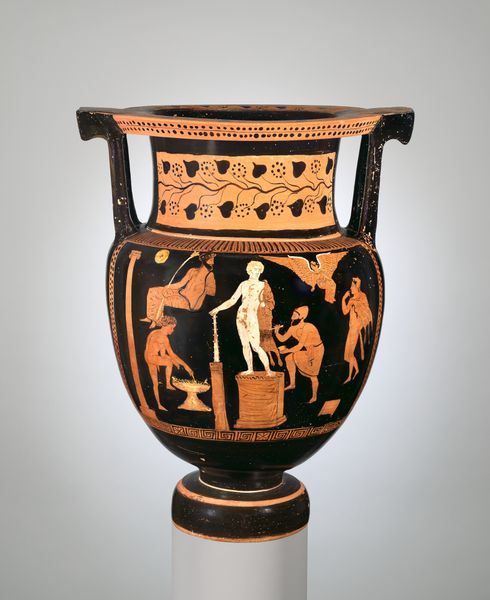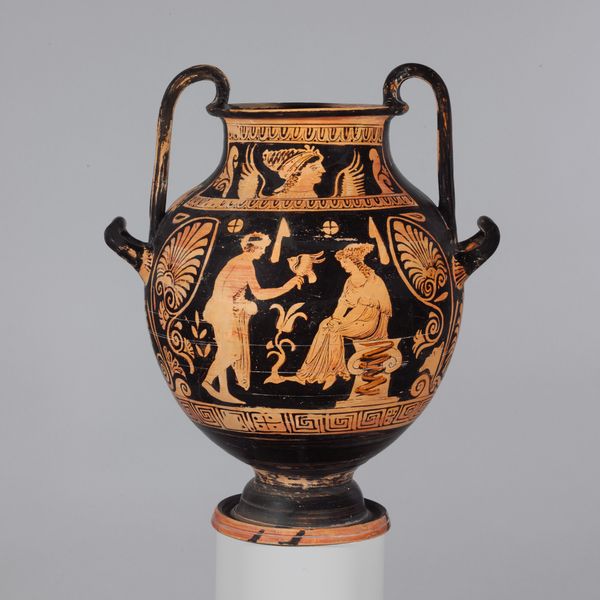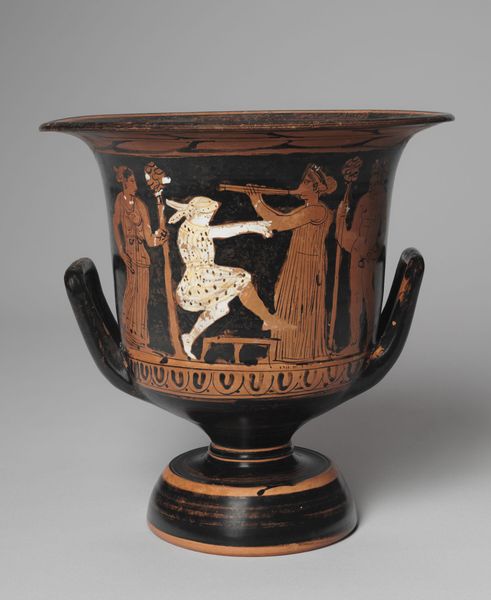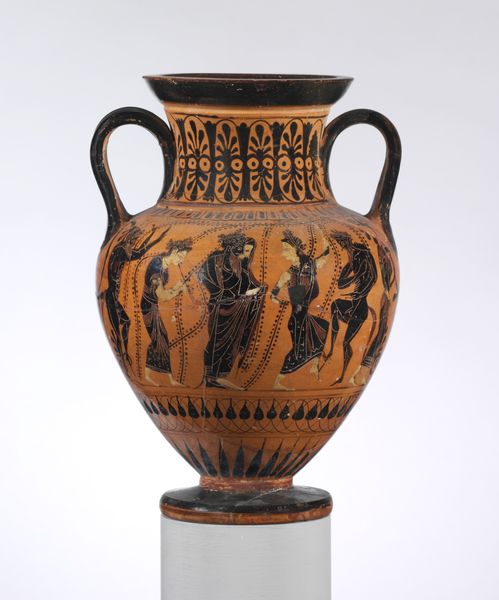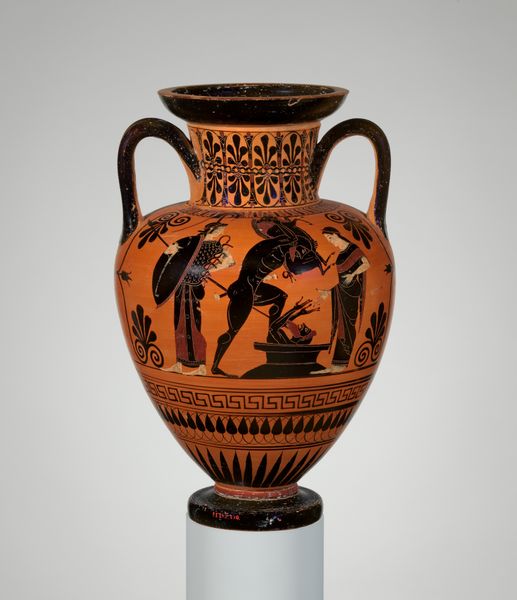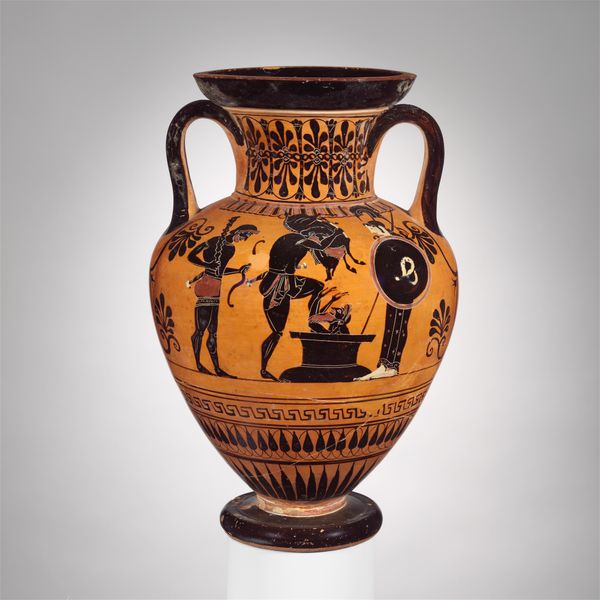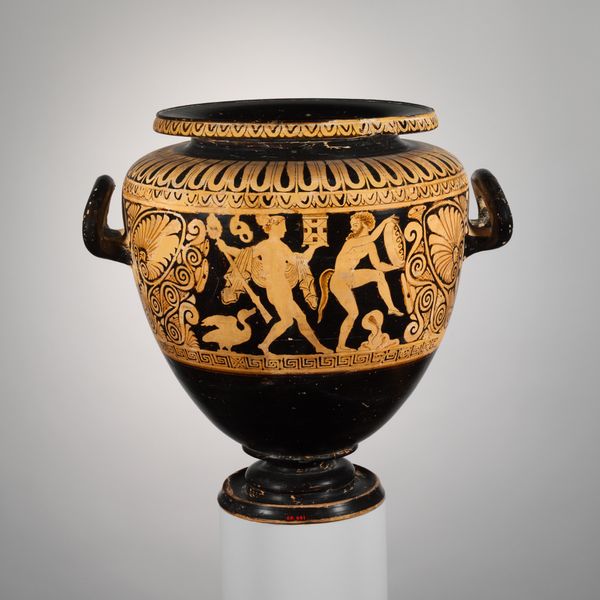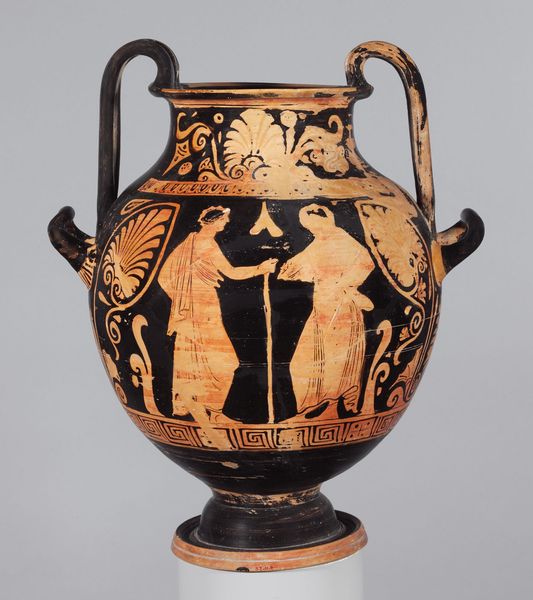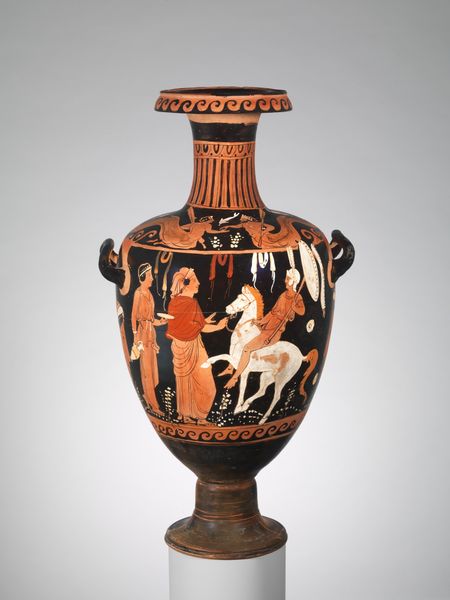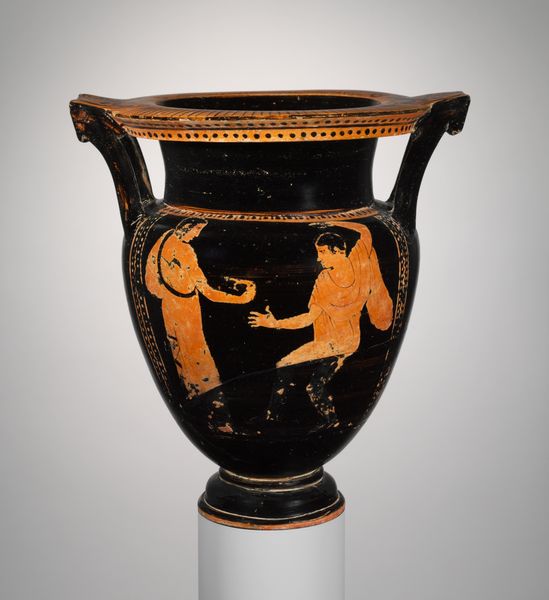
painting, ceramic, earthenware
#
pottery
#
painting
#
greek-and-roman-art
#
ceramic
#
figuration
#
earthenware
#
ceramic
#
earthenware
#
history-painting
Dimensions: H. 21 9/16 in. (54.8 cm)
Copyright: Public Domain
Curator: Here we have an Ancient Greek terracotta column-krater, dating back to around 399 BC. It’s currently held at the Metropolitan Museum of Art. The word "krater" is fascinating – essentially a mixing bowl for wine and water! Editor: Wow, that is beautifully austere! It reminds me of a bittersweet moment captured in painted clay... almost mournful. I’m drawn to the matte earthenware, its tactile sense whispering ancient secrets. Curator: That contrast between the joyous purpose and the rather somber tones is very potent. Notice how the anonymous artist rendered the figures in red-figure technique against a black background, allowing the characters and narrative to leap out. What details grab you? Editor: I'm really intrigued by the scenes depicted— it seems like the ritual offering is so precisely and carefully handled, and that band of vine or ivy detailing up top. Knowing this would have been an object of communal use makes you think about who fired it, mixed paint for it, fired it. I wonder where the raw clay came from for something like this, you know? Curator: Indeed! Every step, a trace of human labor. Considering that the paintings often showed gods and rituals, maybe even historical events, gives a glimpse into the lives and aspirations of Athenians. The exchange of the precious artifact is very clear. It almost seems… reverent? Editor: Exactly, but let's not forget the labor too. These pieces tell the stories of potters, painters, and the individuals commissioning them! What about the accessibility of materials in that time or social conditions? Did politics or cultural identity shape that ceramic production? This is more than mere decoration. Curator: I get you, and maybe both things coexist; The utilitarian piece elevated through narrative depiction? Food for thought. Ultimately, a humbling piece—a silent testament of creative human interaction throughout time! Editor: Agreed! And it reminds us that we understand history through production as much as representation.
Comments
No comments
Be the first to comment and join the conversation on the ultimate creative platform.

